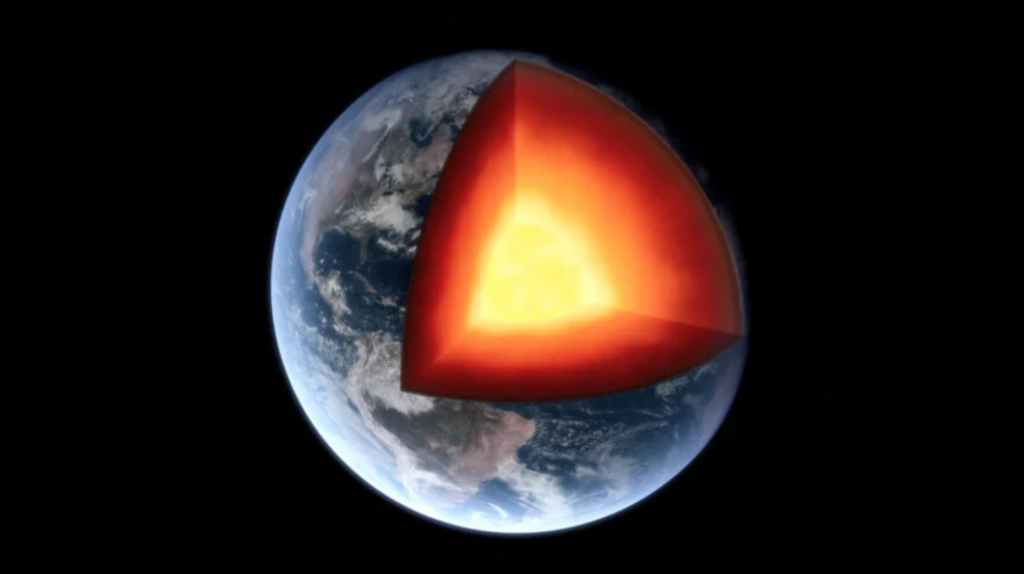The Earth’s inner core has most likely recently stopped rotating and is now changing its rotational direction. Such are the findings of a study in which scientists collected seismic waves from earthquakes that penetrated our planet’s deepest bowels.
The study’s findings suggest that the Earth’s core probably stops and reverses its rotation on a 60-70-year cycle. This discovery has the potential to answer long-standing questions about the climatic and geological phenomena that affect life on Earth.
Although the rotation of the core has an impact on the environment on Earth’s surface, scientists believe that this periodic change in rotation is a natural phenomenon that poses no threat to life on the planet.
The inner core of the Earth is a solid ball of metal 75% the size of the Moon. Because it is in a liquid outer core, it can spin at different speeds and in different directions, but scientists aren’t sure how fast it spins or whether its speed changes over time.

The core, located about 4.9 km below the surface, is under such intense pressure that it is likely as hot as the Sun’s surface. Because of its remoteness and difficulty in studying, our planet’s inner core is one of the least studied environments, despite the fact that it clearly plays an important role in many processes that make our world habitable, such as creating the Earth’s protective magnetic field, which blocks harmful radiation from reaching the surface.
Yi Yang and Xiaodong Song, researchers at Peking University’s SinoProbe Lab in the School of Earth and Space Sciences, have now captured “surprising observations that indicate the inner core has nearly ceased its rotation in the recent decade and may be experiencing a phase transition.”
"Two major forces are acting on the inner core," Yang and Song explained. "The electromagnetic force is one. The magnetic field of the Earth is produced by fluid motion in the outer core. By electromagnetic coupling, the magnetic field acting on the metallic inner core is expected to cause the inner core to rotate. The other force is gravity. Because the mantle and inner core are both highly heterogeneous, gravitational coupling occurs when gravity between their structures tends to drag the inner core to a position of gravitational equilibrium."
The cycles of rotation of the metal sphere at the center of our world can shape our most everyday experiences, such as the length of the day and climatic conditions. Disentangling these nuances will necessitate new models and additional observations of the Earth's mysterious central sphere. The next steps in the research, according to Yang and Song, are to build quantitative models of the physical mechanisms based on the multi-year oscillation system and observe how the rotation will change in the future.
“We’d expect it to rotate westward relative to the Earth’s surface in the coming years and decades,” the researchers concluded. “Seismic waves are still the best way, so maintaining high-quality seismic networks is critical in this regard.”
